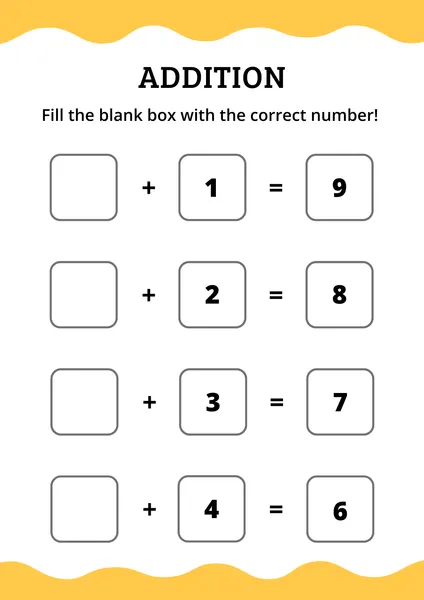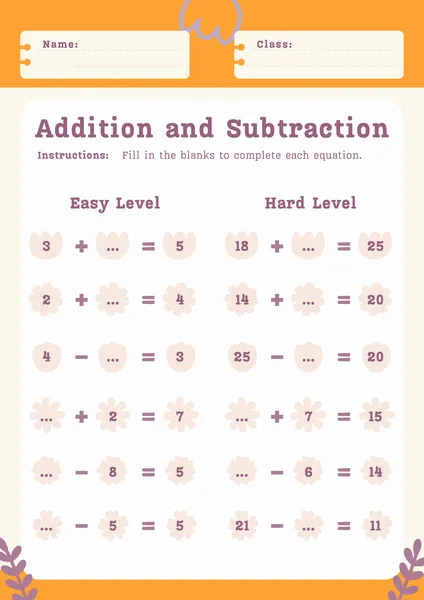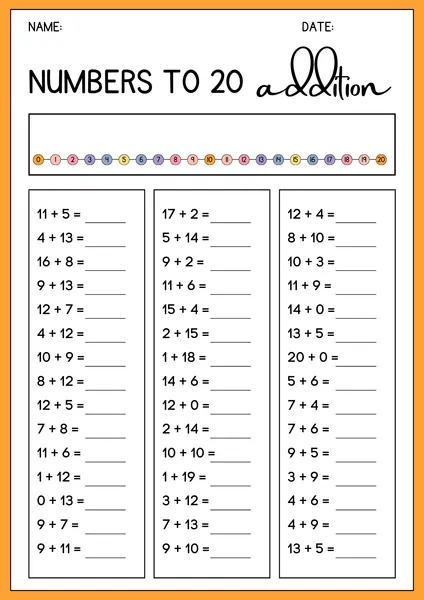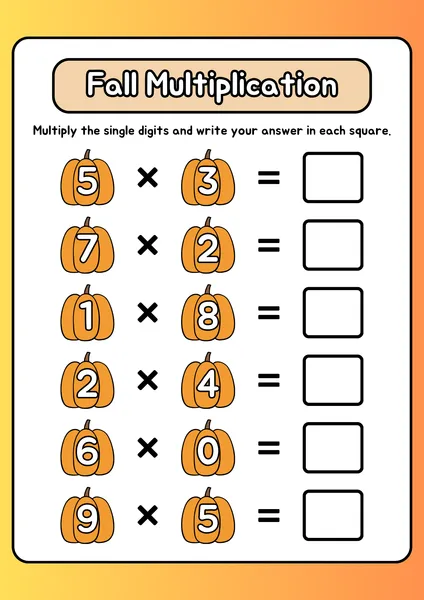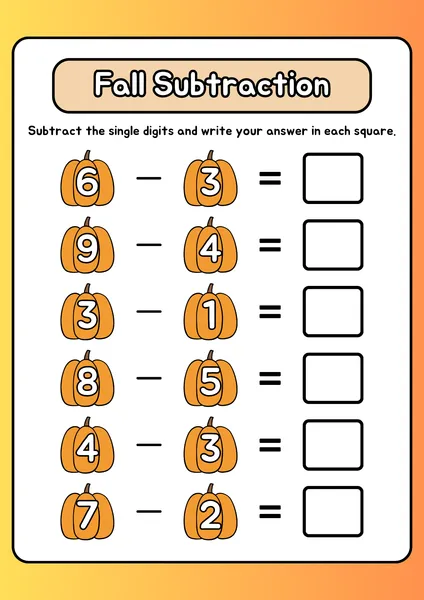Addition is one of the basic arithmetic skills children learn from the first grade, but it is introduced in kindergarten.
In addition, 10 is essential as it forms the foundation for concurrent years as learners advance in their class education. This guide provides teachers and parents with a comprehensive understanding of how to use addition worksheets effectively, coupled with various engaging teaching methods to make learning kindergarten addition worksheets up to 10 fun and effective.
Why Addition within 10?
The focus on kindergarten addition worksheets up to 10 is strategic. It makes children understand the fundamentals of addition well within their ability. This skill helps children build number sense, learn how to combine them, and have more confidence in math. This strong foundation is essential for future success in mathematics.
Strategies for Teaching Addition Worksheets Up to 10
However, worksheets are helpful in classrooms even though they are parts of the whole package that comprise different teaching strategies. Here are some engaging strategies to teach addition within 10:
1. Using Concrete Objects:
- Manipulatives: Use material items such as counters, blocks, and toys or even use items like buttons, pasta, etc. Have children add the tangible sets of objects and count on their total. For instance, “Suppose you have three red blocks and two more blue blocks. How many blocks are there in total?”
- Fingers: Fingers are an easy resource that young learners can easily and immediately utilise. To teach addition, extend learners’ fingers and tell the teacher how many there are, then illustrate how adding more fingers makes the total.
- Real-Life Scenarios: Orients addition into part of daily practises. For instance, We have four apples in the basket. The number of apples we get if we add 3 more?
2. Number Lines:
- Visual Representation: You already know that a number line is a tool that helps learners visualise numbers and their position. Teach children how to move across the number line to gain addition. For instance, to model the problem 5 + 2, you begin with five and count two notches ahead, resulting in 7.
- Number Line Activities: Use number lines to make animated games. For example, let children toss a die and move their “game piece” up the number line. If they are given an additional problem, they must solve it.
3. Simple Word Problems:
- Contextualisation: Such word problems aid in helping the children understand when and when not to use addition. It begins with fundamental problems that can be easily understood by visualisation. For instance, Sarah’s stickers are four, and her friend added two. “Now, how many stickers does Sarah have?”
- Acting it Out: Include students performing the word problems independently or using objects. Associating movements with objects and ideas makes such information gripping and easy to understand.
4. Songs and Rhymes:
- Memory Aids: You should include fun songs and rap that teach children basic addition facts to assist them in remembering addition details.
- Movement and Music: By saying and signing a particular quantity, have the children answer corresponding questions by clapping or hopping to ensure they understand that the amount is added.
5. Games and Activities:
- Dice Games: Create addition problems with dice. The two dice can be thrown, and the two numbers rolled on them are added together by children.
- Card Games: Introduce changes to small-card games, such as ‘War,’ to include additions. For example, PCs can turn two cards and then total, and the one together to do the best is the victor of that given turn.
- Board Games: Develop or incorporate board games that require additional math problems to solve.
How to make addition worksheets work for you
Addition worksheets are valuable additions to any classroom or home for practising addition problems. Here’s how to use them effectively:
- Start with Visuals: Select worksheets which use items or pictures to enable the child to understand the adding process.
- Gradual Progression: It should start from the worksheets of a few digit additions, such as addition within 5, and then move up to 5-10 additions.
- Variety of Formats: Include worksheets in various layouts; some of them include horizontal and vertical addition problems, missing addend, and simple word problems.
- Regular Practice: Daily, as well as more frequent, practice sessions are better than less, more intense workouts.
- Positive Reinforcement: Praise boys for their achievements within lessons and classroom and their willingness to undertake challenging tasks, especially for girls.
- Make it Fun: Use games, incentives, and competitions when dealing with children to ensure they are included in the worksheets.
Kindergarten Addition Worksheets Up to 10
Below, you will find various additional worksheets. You may print and use these with your learners or children.
Worksheet 1: Adding with Objects (Beginner)
Format: Each problem shows the pictures of objects in two sets with + between them and = followed by a blank space.
Example: 3 apples + 2 oranges = ______
Instructions: Find out the number of objects in every group, place the numbers in the boxes alongside the objects as shown, and fill in the blank space with the total number of objects.
5 problems addition within 5
5 problems addition within 10
Worksheet 2: Horizontal Addition (Intermediate)
Format: This means horizontal addition problems with numbers only to add more to the company, which will cause additional costs and corresponding organisational troubles.
Example: 4 + 6 = ______
Instructions: Perform arithmetic addition and fill in the blank with the result of the sums.
10 problems addition within 10
Worksheet 3: Vertical Addition (Intermediate)
Format: This includes vertical additions that only contain numbers.
Example:
5 + 3 —
Instructions: Write the result of the following addition problems below the line.
10 august addition within 10
Worksheet 4: Missing Addend (Advanced)
Format: Worksheet on one more number, also including addition problems.
Example: 2 + ______ = 7
Instructions: Use any number to solve the blank in the addition equation below:
Ten issues addition in ten
Worksheet 5: Addition and Subtraction Word Problems – Advanced
Format: Five- and ten-frame simple addition word problems with numbers within the ten.
Example: Tom currently has three red cars and five blue cars. “What do you get if you sum up all Tom’s cars?”
Instructions: First, read the word problem and rewrite it as an addition equation, and then solve the addition problem, coming up with the answer.
5-word problems
Differentiating Instruction
There is a need to provide instructions to address the needs of the various learners in their classes. Here are some tips:
For Struggling Learners:
- Do fewer teacher-directed lessons and offer more guided experiences with objects and materials.
- Number lines should also be utilised to enhance the general visualisation among the students.
- Deconstruct problems into micro–units.
- Provide a friend, a parent, a family member, a coach and a cheerleader.
For Advanced Learners:
- Introduce regrouping or carrying over after addition using numbers slightly over 10. The teacher demonstrates the concept of addition with regrouping by use of numbers somewhat more significant than 10; for instance, a teacher superimposes the first from the second until it is greater or equal to te,n, then adds the tantamount of the first digit in the lower number to make ten; this extra is then added to the second figure of the
- Unfortunately, the word problems are relatively straightforward. They are listed below to give readers an idea of how to make them a little more complicated.
- You should encourage the child to develop their addition problems or even games.
- Discuss concepts related to a problem, like subtraction as antithetical to addition.
Integrating Technology
Technology can be a valuable tool to enhance additional learning:
- Interactive Math Apps: Some of the most commonly found apps meant to teach addition and can be easily installed on tablets provided below are themed and packed with interesting games and enjoyable activities to practice addition skills up to ten.
- Online Resources: On the given websites, one can find printable worksheets, other exercises, and virtual manipulatives.
- Educational Videos: These can help present additional concepts that are more attractive.
The concept of kindergarten addition worksheets up to 10 is one of the core developments in the developmental math process of a child. Thus, after combining various teaching approaches with attractive worksheets, teachers and parents can arrange a good and productive learning process. It is important to stress that you must work on the fundamentals, develop children’s appreciation of mathematics, and fail forward.
Every child can develop this vital skill through appropriate encouragement, persistence and use of correct equipment.
By any of these fines, we prepare our children to be more confident and perform well in future mathematical activities. Below are ways you can use this guide when supporting your children or students and modify some or all the activities based on their learning style. Happy teaching!
